Fighting scab on fruit trees and vegetable crops, preventive measures
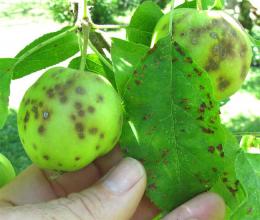
Scab is one of the most common and harmful diseases of fruit trees in the Non-Black Earth Zone.
Therefore, it is important for gardeners to know the signs of this disease and the basic principles of treating infected plants. The fight against scab requires an integrated approach, including proper ongoing care of crops.
Content:
- What is scab and its main symptoms
- Measures to prevent scab on fruit trees
- Fighting scab on apple and pear trees
- Fighting scab on apple and pear trees without the use of chemicals
- Fighting scab of potatoes and other vegetable crops
What is scab and its main symptoms
This is a disease caused by pathogenic fungi and bacteria, sometimes actinomycetes. It affects apple and pear trees, potatoes, nightshades, carrots, beets, and citrus fruits.
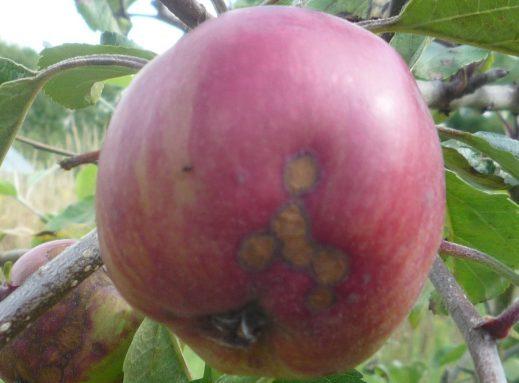
The main symptoms of scab in apple and pear trees:
- dark spots, warts,
- cankers on foliage, fruits
The disease significantly reduces the amount of harvest obtained and impairs its quality characteristics. The first signs of infection are noticeable after the leaves appear. Small spots of pale green color are visible on the leaves, on the outside of apple trees and on the back of pear trees.
If the fungus has settled on a tree in the spring, spots will form larger in size than if infected in the summer months.
Fruits are affected by fungus from other parts of the plant.First, the disease appears on the foliage in the form of unformed, fuzzy spots.
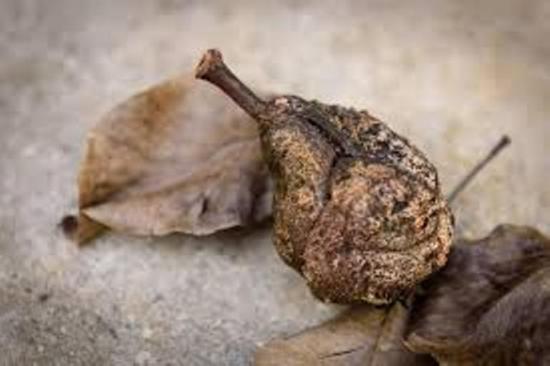
At this time, the fungus is already fully damaging the plant tissue, and after a few days the spots darken, are framed by a white edge and acquire a “velvety” coating.
Infected ovaries stop growing and dry out. This form is the most dangerous, since it significantly reduces the yield of garden crops.
Measures to prevent scab on fruit trees
It is important for gardeners to know the main causes of the disease and methods of its prevention, the main ones include:
- Preventive pruning and crown formation, destruction of affected shoots. The crown must be illuminated and ventilated, and this is only possible with proper pruning of the plant;
- The main source of the disease is last year's fallen leaves. In the fall, be sure to rake and destroy all the foliage, embed it in the soil, and carefully dig it up.
- In the fall, they monitor the tree trunk circles and row spacing.
- Or another option is possible: spraying with a solution of copper sulfate. Mix 30 grams of copper sulfate, 40 grams of lime and 1 liter of water. The first spraying occurs during the formation of buds, the second - when the plant fades, and the third - after another 14 days;
- The use of copper oxychloride in a ratio of 4 grams of powder per liter of water.
Fighting scab on apple and pear trees
The pathogens on these fruit trees are closely related, but the disease does not spread from one type of tree to another. Scab often occurs on apple or pear trees, and gardeners do not always know how to deal with it.
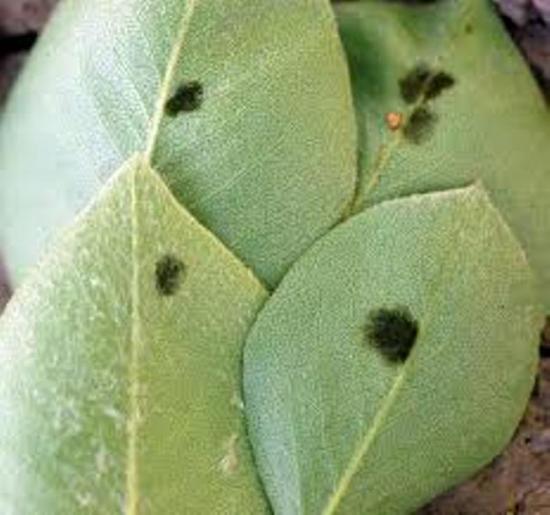
At the first minor manifestations of the disease, plants usually use the following methods:
- Treatment with Zircon or Agate solution
- Treatment Bordeaux mixture. The effect of the solution lasts for 14 days, so 6-7 treatments are carried out over the entire season. The first occurs at the beginning of the growing season, at the time the buds appear. The concentration of the solution should be the strongest (30 g of copper sulfate, 35 g of lime diluted in 1 liter of water). Each subsequent one is done after 14 - 16 days with a less concentrated solution (10 g of vitriol, 10 g of lime per 1 liter).
Use of systemic agents.
| Score | The drug is prepared and used after the formation of buds and after they fall off, with a break of 14 days in a ratio of 2 ml per 10 liters of water |
| Horus | Shows good results even at low temperatures and is not washed off by precipitation. The first treatment occurs at the beginning of the growing season, and the second at the end of flowering. Validity period: about 30 days |
| Strobe | Treatments are carried out 2 - 3 times with an interval of 2 weeks |
It is also useful to add mineral fertilizers. Along with the treatment, a variety of foliar feeding is applied.
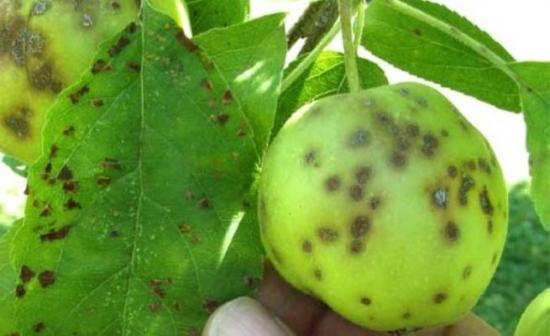
Complex treatments are most effective in combating scab in spring, autumn and summer; they include the methods described below.
- Apply mineral fertilizers after harvest and before leaves fall. In the first months of spring, spray with Bordeaux mixture or a preparation containing copper. If necessary, repeat after 2 weeks. Before use, it is necessary to check the susceptibility of the foliage to burns from the drug; to do this, several branches are torn from the tree and the effect of the liquid on them is checked; if stains appear as a result, the concentration is reduced.
- After this procedure, the trees are treated with a suitable fungicide (for example, strobe or skor).
Even more useful information about the fight against scab - when watching the video:
Fighting scab on apple and pear trees without the use of chemicals
For many gardeners and summer residents, an important point in preserving and increasing the harvest is the refusal to use chemicals.
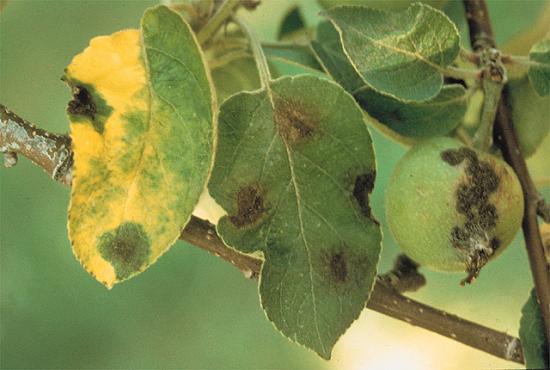
Although all kinds of chemical compounds usually give the best results, they can remain in the fruits and enter the human body with these fruits.
The most famous “folk” remedies without chemicals are:
- Treatment with mustard solution. Dissolve 90-100 grams of dry mustard powder in a 10 liter bucket of water. Before dissolving, it is advisable to mix the dry substance with a small amount of warm water. Treatment is carried out after rain, preferably in the spring season;
- use of saline solution. Prepare a fairly concentrated mixture: add 1 kg of salt to 10 liters of water. Treatment occurs in early spring, when only the first signs of the disease are noticeable. Gardeners should take into account that this method can slow down the growth and development of the fruit plant;
- spraying with horsetail. To prepare the solution, take 1/3 of a bucket of horsetail and add 10 liters of water. The plant is infused for 3 days. The treatment is carried out during the appearance of foliage on crops.
Fighting scab of potatoes and other vegetable crops
Often, plant growers do not pay much attention to the disease, because affected potatoes can be freely used for food, but the taste, quality and nutritional value of the crop are reduced several times.
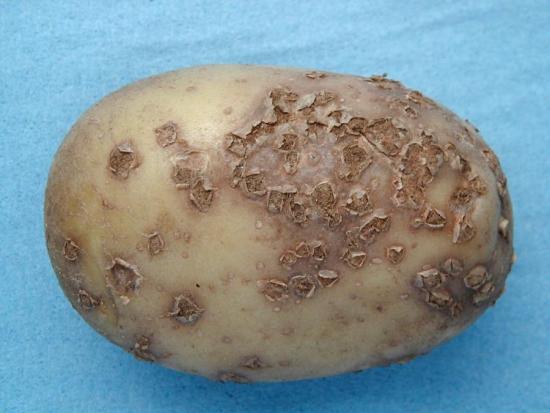
The first signs of the appearance of fungus on potatoes depend on the type of disease, most often these are:
- The appearance of small brown, red ulcers on the tuber.
- Roughness of tubers.
- Gray-blue spots on the tuber.
It is possible to get rid of the disease; for this, a wide range of measures is used, including both agrotechnical methods and treatment with various chemicals.
Agrotechnical practices include:
- compliance with crop rotation: after the appearance of a disease, it is advisable not to plant potatoes in the place where it appeared for 4 - 5 years. In addition to potatoes, carrots, beets and the entire nightshade family are prone to the disease. After harvesting, the area is sown with sclerites, such as mustard, cereals or legumes;
- timely application of the necessary mineral fertilizers (per 100 sq. m): ammonium sulfate 1.5 kg, superphosphate 2 kg, potassium magnesium 2.5 kg, boric acid, copper sulfate and manganese 20 g each. everyone;
- treatment of tubers with preparations before planting. The safest of them are Fitosporin, Maxim. Fitosporin is suitable not only for seed material, but also in subsequent treatments to consolidate the result. For black scab, stronger remedies are required: Colfugo, Malcozeb.
Watch a video about potato scab:
Scab is a very unpleasant disease that quickly infects healthy trees and vegetable crops and significantly reduces the taste, nutritional properties of the crop and its quantity.
Therefore, the most important way to combat the disease is prevention and quickly taken measures at the first signs of the disease.

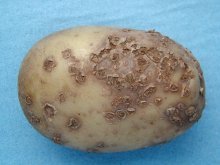
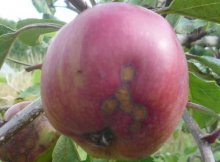
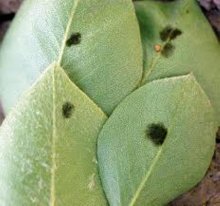
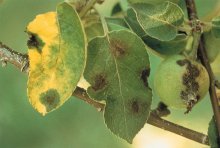
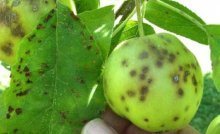
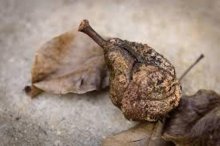
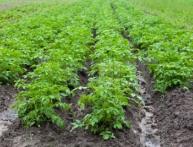
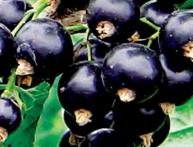
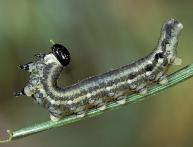
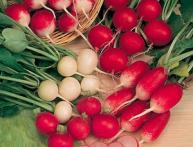
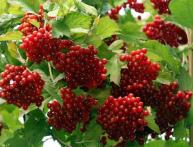
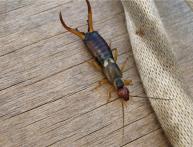
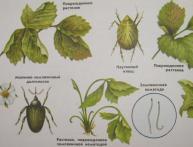
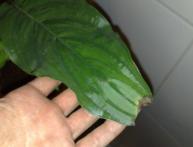
Comments
It’s strange that we didn’t pay attention to this when we were harvesting from a large apple tree, only it was surprising that on one side of the tree there were clean apples, and on the other side there were spotted apples, and this side had a vegetable garden adjacent to it, maybe that was the problem. This defect did not affect the taste of the apples.
Preventive spraying against fungal diseases should be done to all plants on the site every spring, including against scab. It can move from apple trees to plums, cherries, junipers, currants and then calmly spread from them again to the entire garden and vegetable garden. And even if the apples have not changed in taste, then over time the tree will become more and more sick and the size of the fruits, the number of ovaries will be less and less - do not delay treatment.
As far as I know, saline solution is recommended if you need to destroy the tree itself, for this you water it, but I would probably be afraid to spray it with this. I don't know what's worse though.